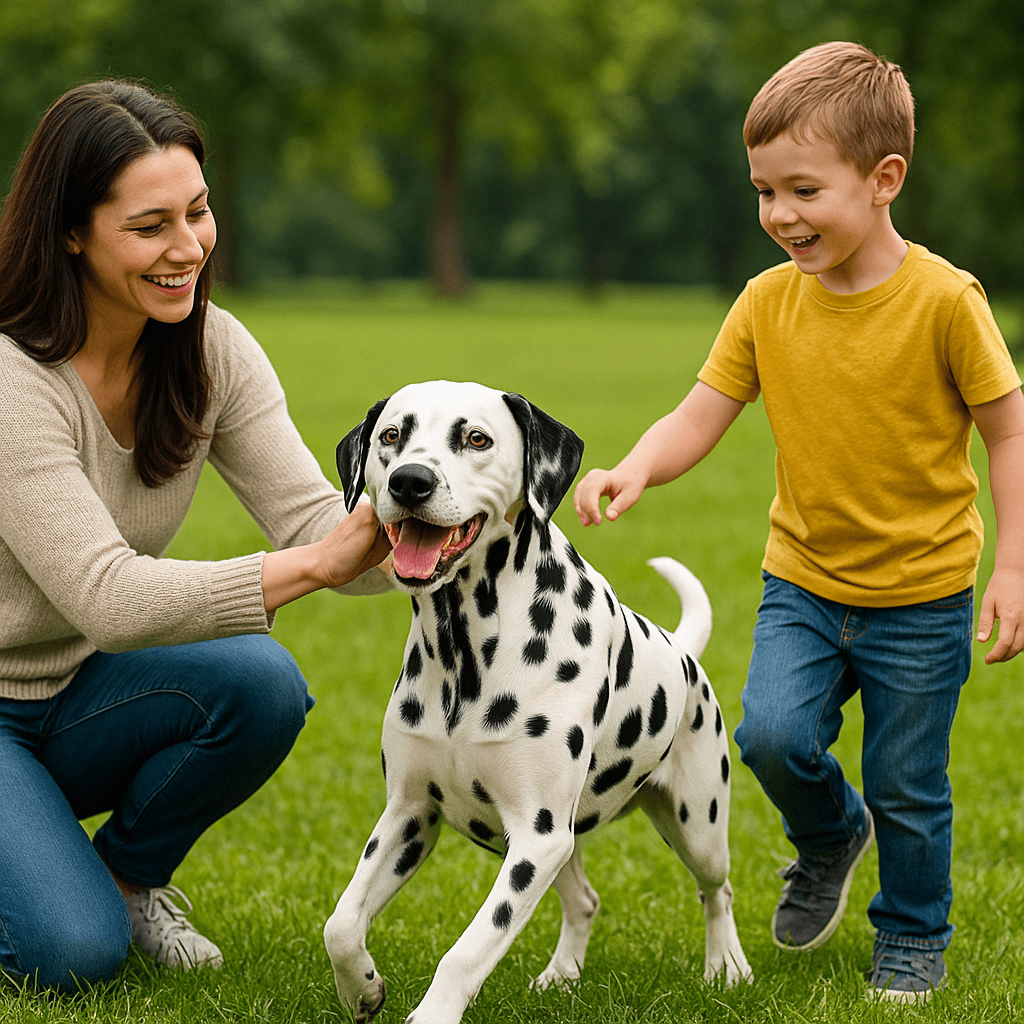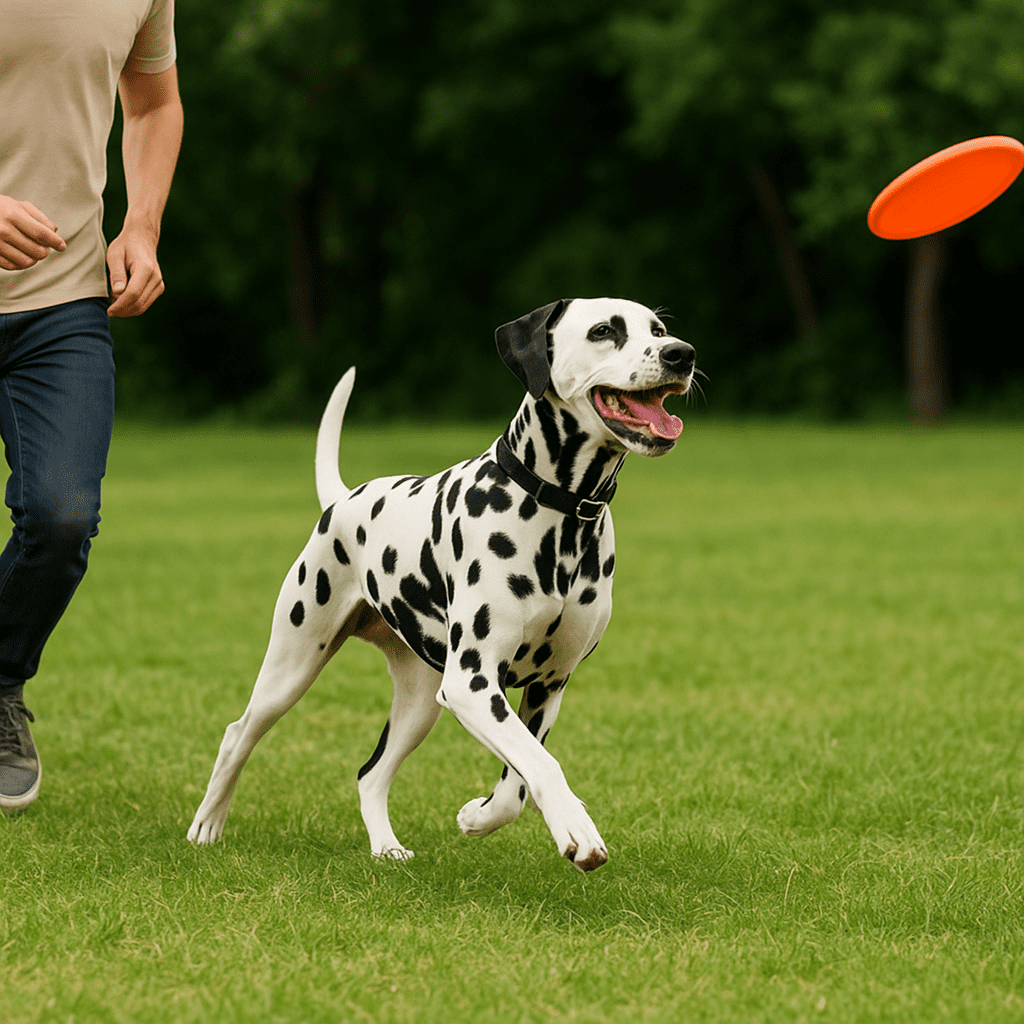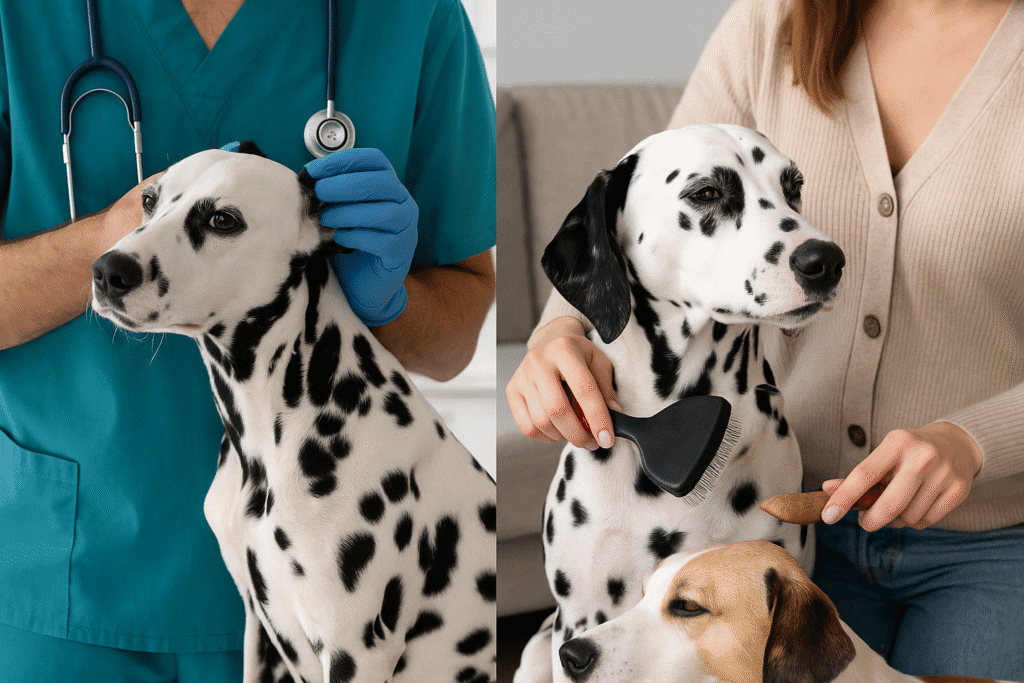This Dalmatian dog care guide explores everything you need to know about these iconic spotted dogs—from their lively personality to intense exercise needs and potential health challenges. Learn how to raise a healthy, happy Dalmatian with proper grooming, training, and preventive care.
Introduction
The Dalmatian is one of the most recognizable dog breeds in the world, thanks to its unique spotted coat and high energy. But owning a Dalmatian comes with responsibilities. This Dalmatian dog care guide covers their temperament, exercise needs, grooming requirements, and common health concerns to help you become the best pet parent possible.
(Outbound link: For a general overview of breed standards, see AKC: Dalmatian Breed Profile.)

Dalmatian Personality Traits
Dalmatians are intelligent, alert, and highly active. They are known for their playful spirit and loyal companionship, making them excellent family dogs when properly trained and socialized.
- Energetic: They thrive in active households.
- Protective: Often watchful and good watchdogs.
- Sensitive: Respond best to positive reinforcement.
(Internal link: Compare with another energetic breed in our Australian Shepherd Guide.)
Exercise Requirements
Dalmatians are endurance dogs bred to run alongside carriages. They require at least 1–2 hours of vigorous activity daily.
Best Activities
- Running and jogging
- Agility training
- Frisbee and fetch games
- Swimming (if introduced early)
Without sufficient exercise, Dalmatians can develop destructive behaviors such as chewing and excessive barking.
Grooming and Coat Care
Despite their short coat, Dalmatians shed heavily year-round. Weekly brushing is essential to manage shedding and keep the coat healthy.
Tips for Grooming
- Brush weekly with a rubber curry brush.
- Bathing only when necessary.
- Regular nail trimming to prevent discomfort.
(Outbound link: Learn step-by-step grooming basics from AKC: How to Groom a Dog at Home.)

Diet and Nutrition
A balanced diet is crucial for maintaining your Dalmatian’s health. They are prone to urinary stone formation, so diet should be carefully managed.
Feeding Guidelines
- High-quality protein sources
- Avoid excess purine-rich foods (like organ meats)
- Always provide fresh water
(Outbound link: For expert advice, see VCA: Feeding Guidelines for Dogs.)
Health Challenges in Dalmatians
While generally healthy, Dalmatians are prone to certain breed-specific conditions.
Common Health Issues
- Deafness: Approximately 8% are bilaterally deaf; BAER testing is recommended.
- Urinary Stones: Linked to their unique metabolism.
- Skin Allergies: Can develop rashes and itching.
- Hip Dysplasia: May cause mobility issues.
(Internal link: Learn more in our Dog Atopic Dermatitis Guide.)
Training Tips for Dalmatians
Training should begin early with positive reinforcement. Harsh methods can cause fear and resistance.
Best Practices
- Use treats and praise generously.
- Keep sessions short and fun.
- Expose to different environments early (socialization).
(Internal link: For recall training, see Recall Training Guide.)
Living with a Dalmatian
Dalmatians thrive in active families and do best with space to run. Apartment living can work if owners are committed to long walks and exercise.

Frequently Asked Questions (FAQ)
- Are Dalmatians good family dogs?
Yes, when properly trained and socialized, they make loyal companions. - How much exercise does a Dalmatian need?
At least 1–2 hours of vigorous exercise daily. - Do Dalmatians shed a lot?
Yes, they are heavy shedders despite their short coats. - Are Dalmatians prone to health issues?
They can be prone to deafness, urinary stones, and skin problems. - What’s the average lifespan of a Dalmatian?
12–14 years with proper care.
Conclusion
The Dalmatian is a beautiful, energetic, and loyal breed, but requires an owner who can meet their exercise and health needs. With consistent training, proper nutrition, and regular veterinary care, your Dalmatian can thrive and bring endless joy to your home.
Call to Action
Looking for more breed insights? Explore our Dog Breeds collection here.

